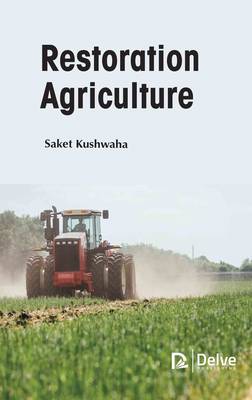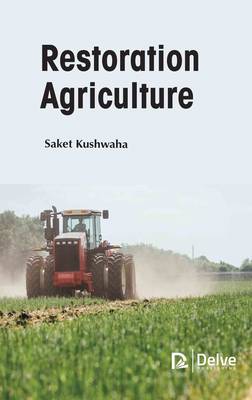
- Afhalen na 1 uur in een winkel met voorraad
- Gratis thuislevering in België vanaf € 30
- Ruim aanbod met 7 miljoen producten
- Afhalen na 1 uur in een winkel met voorraad
- Gratis thuislevering in België vanaf € 30
- Ruim aanbod met 7 miljoen producten
Zoeken
Omschrijving
In many communities in the world, the population lives on agriculture. Smallholder agriculture covers 75% of agricultural production, most of which are rain-fed agriculture. This number indicates that the impact of population explosion in rural areas is prompting communities to adopt unsustainable farming practices, like burning of tropical rain forests to grow crops, planting on steep slopes, entering fragile marginal ecosystems, and overgrazing and over cropping. This volume estimates that one-sixth of the globe's land area (nearly 2 billion hectares) has been degraded due to overgrazing and negative farming practices. Water supply for agricultural purposes is becoming scarcer, and there is almost no land reserve that can be used to expand the agricultural base. Come 2025, nearly 3 billion people in 48 countries shall be affected by severe water shortages throughout the year or some months. The volume recommends suitable and site-specific technologies to reverse poverty and food insecurity issues. Some of the chapters mentioned include: chapter 1: philosophies of restoration agriculture on small farms, chapter 2: soil food web and chapter 3: conservation farming among others. Both scientific and indigenous knowledge available to the community should effectively facilitate this process, and farmers must actively participate in designing, implementation and evaluation of these technologies.
Specificaties
Betrokkenen
- Auteur(s):
- Uitgeverij:
Inhoud
- Aantal bladzijden:
- 258
- Taal:
- Engels
Eigenschappen
- Productcode (EAN):
- 9781774690833
- Verschijningsdatum:
- 1/12/2021
- Uitvoering:
- Hardcover
- Formaat:
- Genaaid
- Afmetingen:
- 154 mm x 226 mm
- Gewicht:
- 476 g

Alleen bij Standaard Boekhandel
+ 444 punten op je klantenkaart van Standaard Boekhandel
Beoordelingen
We publiceren alleen reviews die voldoen aan de voorwaarden voor reviews. Bekijk onze voorwaarden voor reviews.











